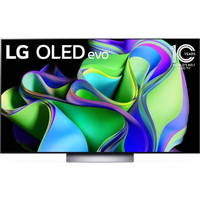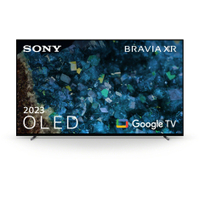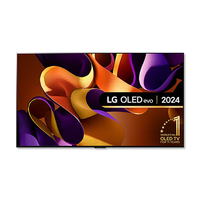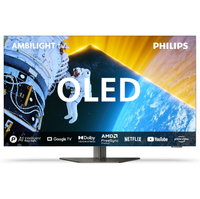What Hi-Fi? Verdict
The C4 is a surprisingly large upgrade on the uncharacteristically dull C3 of last year. Big improvements to brightness and sharpness make for an image with lots of pop and dynamism, and the rich tone and vibrant colours are a delight – but LG has tempered all of this with realism, consistency and authenticity. Sound quality has been significantly improved, too. This is the first 2024 mid-range OLED TV that we have tested, but it has laid the gauntlet for its rivals in dramatic fashion.
Pros
- +
Punchy, sharp, rich and vibrant, yet still natural
- +
Much improved sound quality
- +
Excellent UI and flawless gaming specs
Cons
- -
Minor lack of shadow detail in SDR
- -
MLA tech would have been nice
Why you can trust What Hi-Fi?
This is the big one.
Each new C-series OLED TV from LG is a big deal on account of the range’s near-legendary reputation for balancing performance, features and price, but there’s even more interest in the C4 thanks to an uncharacteristically lacklustre showing from last year’s C3.
It has to be said that the omens are not terribly good: the C4 looks just like the C3 and its specs appear to be very similar indeed. The price has dropped a little in the UK, but only in so far that it addresses last year’s price rise, and that alone would not be enough to topple the current mid-range OLED champ – the Sony A80L.
The good news for everyone but Sony is that beneath the familiar design and specs lie big performance upgrades to both picture and sound that put the C-series back on top.
Recent updates
6th August 2024
We originally reviewed the 65-inch LG C4 in April 2024 but we have now updated the pricing section with comparisons with the Sony Bravia 8 and Samsung S90D, added the LG G4 and Philips OLED809 as 'also consider' options, added an FAQ section, and done a general update for relevance and clarity.
We have also now reviewed the 48-inch version of the C4 – click here to read our LG C4 48-inch review.
Price
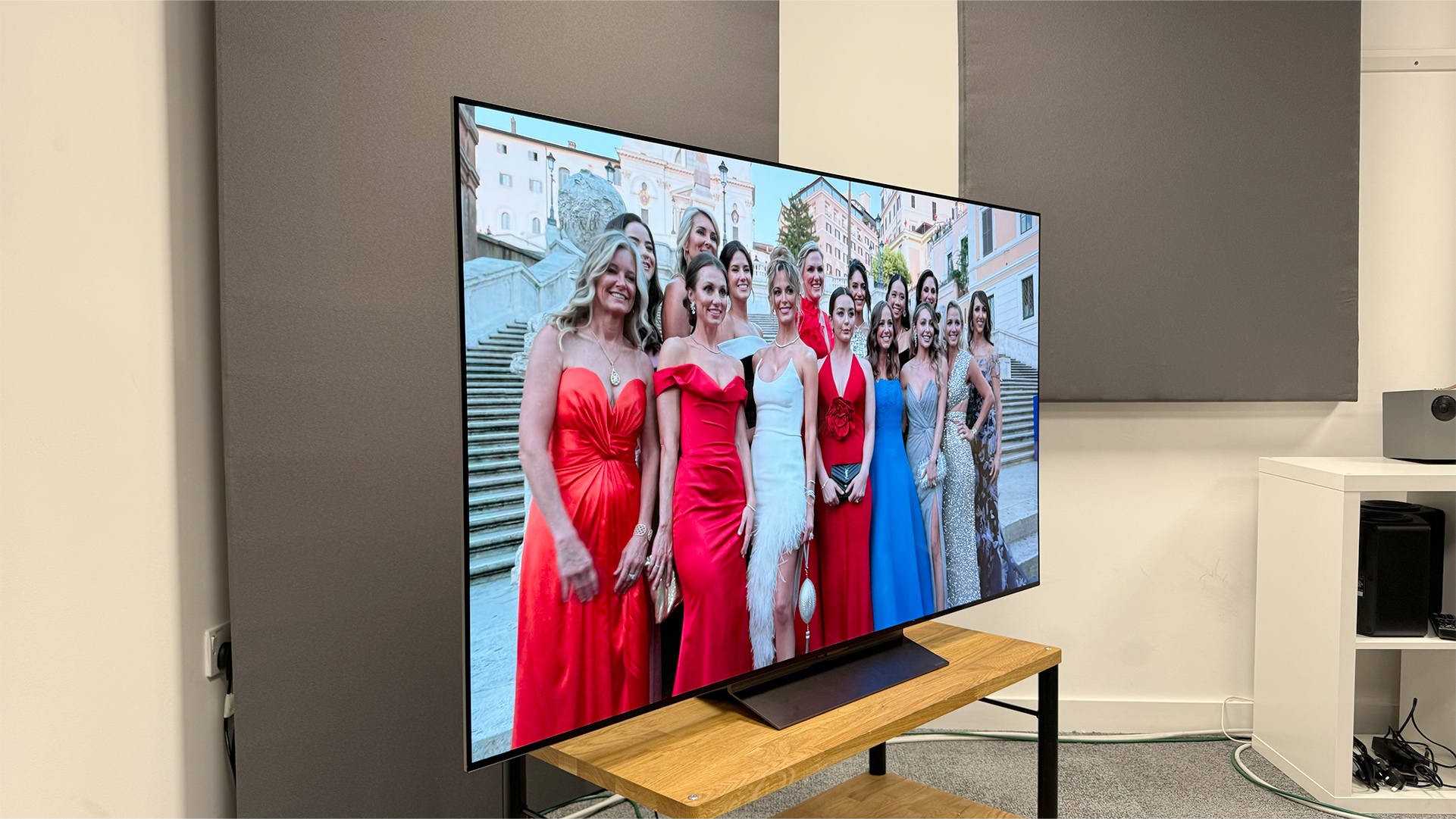
- Cheaper in the UK and Australia than the C3 was at launch
- More expensive in the US
As mentioned above, in the UK the C4 is slightly cheaper than the C3 was when it launched. In most sizes, the same is also true in Australia, but in the US, prices are up by $99 in every size. Here is the full comparison:
Size | C4 | C3 |
|---|---|---|
42" | £1400 / $1499 / AU$2199 | £1500 / $1400 / AU$2595 |
48" | £1500 / $1599 / AU$2499 | £1600 / $1500 / AU$2895 |
55" | £1900 / $1999 / AU$3299 | £2100 / $1900 / AU$3295 |
65" | £2700 / $2699 / AU$4299 | £2900 / $2600 / AU$4295 |
77" | £3800 / $3699 / AU$5999 | £4000 / $3600 / AU$6795 |
83" | £6000 / $5399 / AU$7999 | £6500 / $5300 / AU$8995 |
Like previous C-series models, the C4 sits between the new B-series and G-series. Much has been made of the gap between the C4 and G4 being wider than before on account of a difference in processor for the first time, as well as a shortening of the gap between the B4 and C4 thanks primarily to the former featuring four HDMI 2.1 sockets in a first for the B-series.
As we’ve teased and will go into in more detail, performance is about far more than specs, so it's wise not to make assumptions about which model is the sweet spot of the range. That said, we have now also tested the G4 (click here for our LG G4 review), and while it's an exceptional TV, we do feel that the C4 remains the best buy on a performance-per-pound basis. That recommendation could of course change once we've had the B4 in for a full review.
This is how the launch prices of the three new models compare:
Size | B4 | C4 | G4 |
|---|---|---|---|
42" | No such model | £1400 / $1499 / AU$2199 | No such model |
48" | £TBC / $TBC / AU$TBC | £1500 / $1599 / AU$2499 | No such model |
55" | £1700 / $1700 / AU$2499 | £1900 / $1999 / AU$3299 | £2400 / $2599 / AU$4199 |
65" | £2500 / $2200 / AU$3299 | £2700 / $2699 / AU$4299 | £3300 / $3399 / AU$5299 |
77" | £3500 / $3400 / AU$TBC | £3800 / $3699 / AU$5999 | £4500 / $4599 / AU$7999 |
83" | No such model | £6000 / $5399 / AU$7999 | £7000 / $6499 / AU$9999 |
Arguably more important than how it compares with its stablemates on price is how the C4 compares with its rivals. Its closest competition will come from the Samsung S90D and Sony Bravia 8, neither of which we've yet had the opportunity to review. You will find a price comparison of the three models below (UK buyers should also check out our Philips OLED809 review).
Size | LG C4 | Sony Bravia 8 | Samsung S90D |
|---|---|---|---|
42" | £1400 / $1499 / AU$2199 | No such model | No such model |
48" | £1500 / $1599 / AU$2499 | No such model | £1499 / $1400 / AU$n/a |
55" | £1900 / $1999 / AU$3299 | £2199 / $2000 / AU$2995 | £1799 / $1600 / AU$3299 |
65" | £2700 / $2699 / AU$4299 | £2699 / $2800 / AU$3995 | £2499 / $2000 / AU$4299 |
77" | £3800 / $3699 / AU$5999 | £3999 / $3900 / AU$6495 | £3499 / $3700 / AU$6799 |
83" | £6000 / $5399 / AU$7999 | No such model | £5299 / $5400 / AU$7999 |

For this review, we have tested the 65-inch version of the C4. Because of the consistent way in which OLED TVs usually scale up and down, we expect the 55-inch and 77-inch models to perform very similarly to the 65-incher, although some minor differences in sound quality are to be expected. The 83-inch version should perform just as well, but OLED TVs that size are very rarely made available for review so a lack of first-hand experience with them means we're not comfortable vouching for that specific edition of the C4. Below 55 inches, things change quite dramatically, most notably because smaller OLED TVs traditionally can't go as bright as their larger siblings. LG has told us that the 42-inch and 48-inch versions of the C4 are closer in brightness to the bigger models than any equivalents before, but there are also design and sound system differences to consider so we will be reviewing those models separately at a later date.
Design
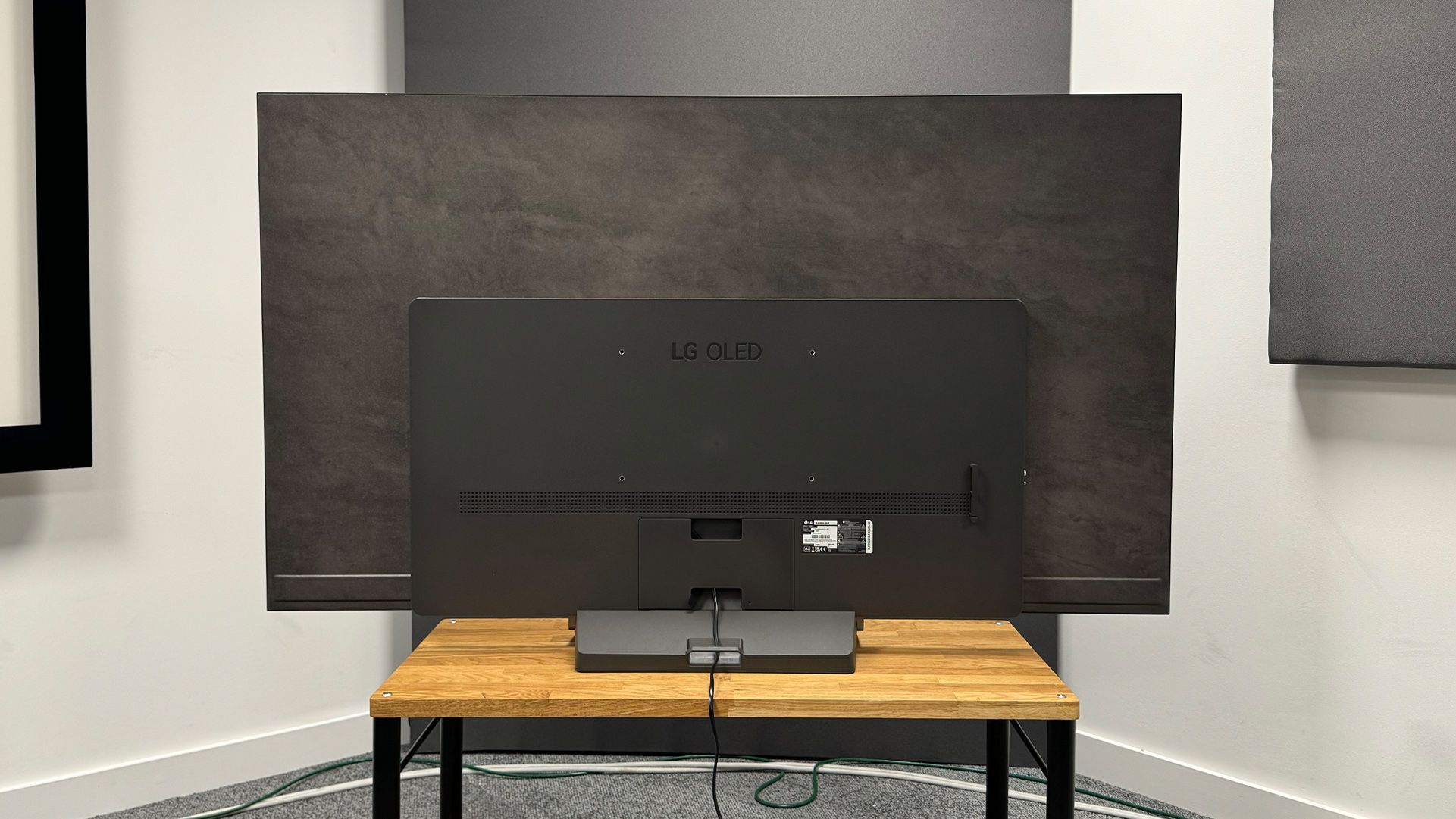
- Identical design to the C3
- Strikingly thin and very light, but well-made
- Doesn’t easily accommodate a soundbar
Some minor differences in finish aside, the C4 looks identical to the C3, which looked identical to the C2. Design stagnation is never really something to celebrate, but it’s worth remembering just how groundbreaking the design of the C2 was – and that other brands still haven’t caught up.
Firstly, most of the chassis is exceptionally thin – around half a centimetre. LG has managed to squeeze all of the connections, speakers and processing hardware into an enclosure that is much more compact than that of rival TVs, making that exceptional thinness all the more stark and striking. At its thickest, the TV is still just 4.7cm. That is thicker than the G4 which, like the G3 before it, is a uniform 2.4cm, as well as the Sony Bravia 8 (3.7cm), but it's thinner than other rivals such as the Philips OLED809 (11.1cm) and Panasonic Z90A (6.9cm).
More impressive than the C4’s thinness, though, is how extraordinarily light it is for a large TV. The 65-inch model on test weighs just 16.6kg without the stand and 18.5kg with it. That’s significantly lighter than the G4 (23.8/29.1kg), Sony Bravia 8 (22.3/23.2kg), Philips OLED809 (22.9/27.8kg) and Panasonic Z90A (19/24kg), and it makes the C4 much easier to handle during installation and far less of a strain on your wall and fixings if you choose to wall-mount. Despite this impressive lack of weight, the C4 still feels solid and well-made.
The C4’s bundled pedestal stand is dainty, stylish and compact, and it allows the TV to stand on furniture that’s much narrower than the TV itself. Unfortunately, the design of the stand doesn’t leave room for a typical soundbar. LG will sell you a soundbar that seamlessly integrates with the C4 but, unfortunately, said model doesn’t sound particularly good, as you’ll discover in our LG USC9S review.
Features
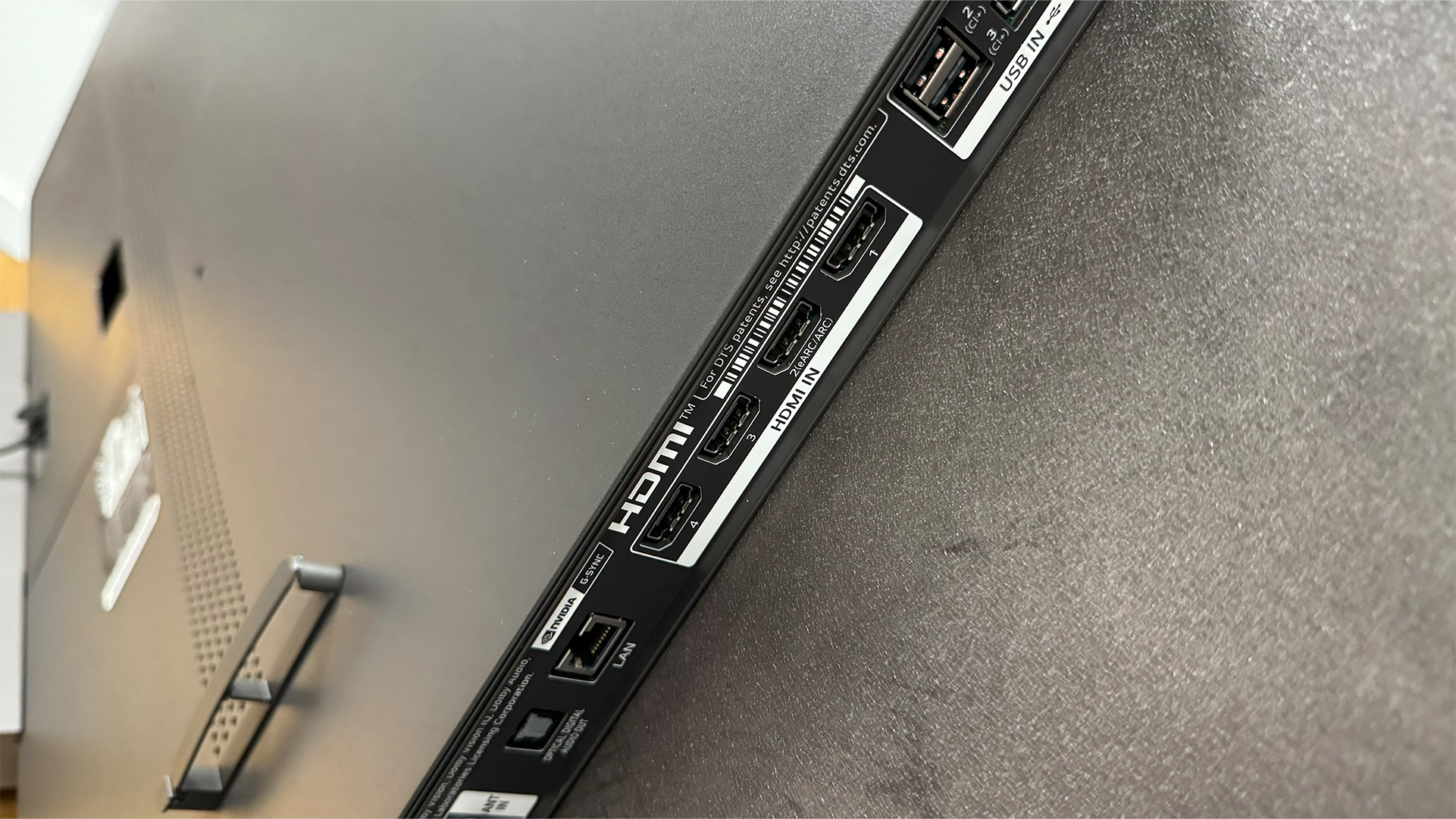
- Upgraded Alpha 9 processor – but the G4 features an all-new Alpha 11
- No MLA technology or heatsink
- Excellent gaming features
As mentioned, the C4 is very similar to the C3 in terms of the spec sheets. It still has four HDMI 2.1 ports, which is good news for gamers, as even with a soundbar plugged into one of them you are still able to get a full-fat gaming experience from three consoles and/or gaming PCs plugged in simultaneously.
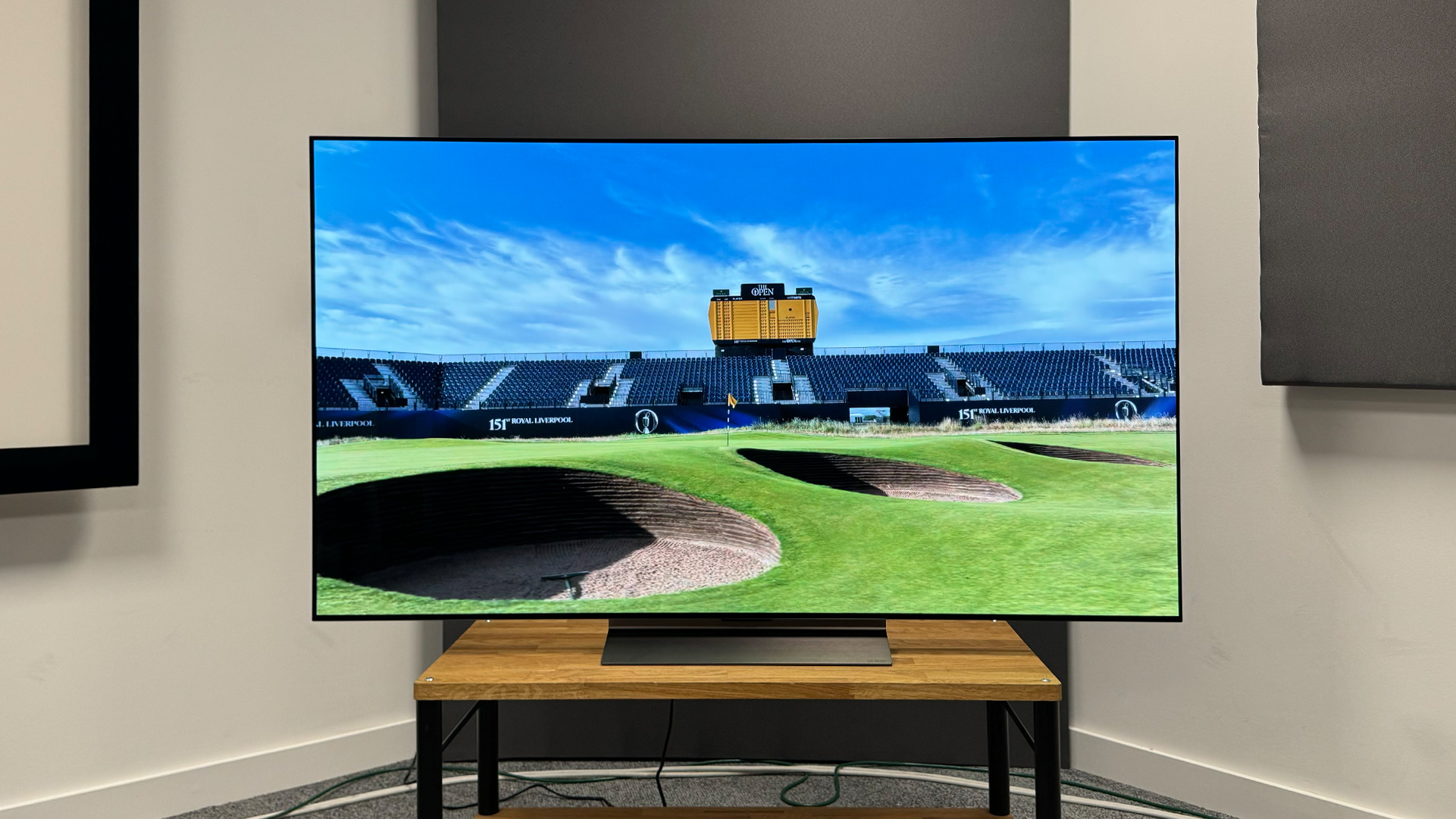
Screen size 65 inches (also available in 42in, 48in, 55in, 77in, 83in)
Type OLED
Backlight N/A
Resolution 4K
HDR formats HLG, HDR10, Dolby Vision
Operating system webOS 24
HDMI inputs x4 (4 x 48Gbps HDMI 2.1)
Gaming features 4K/120Hz, 4K/144Hz, VRR, ALLM, Dolby Vision game mode, HGiG
ARC/eARC eARC
Optical output? Yes
Dimensions (hwd, without stand) 83 x 144 x 4.5cm / 32.5" x 56.7" x 1.8"
There are some minor gaming upgrades, too, including full Nvidia G-Sync VRR certification (rather than a ‘G-Sync Compatible’ label), and 144Hz compatibility (up from the 120Hz of the C3), which will be music to the ears of hardcore PC gamers with similarly hardcore rigs. Dolby Vision gaming is apparently supported up to the new 144Hz limit, too, but there’s currently no source available that can take advantage of that as the only Dolby Vision games machines are Xbox’s Series consoles, which top out at 4K/120Hz.
We had hoped that the C4 would get the first-generation MLA technology of last year’s G3, but that has turned out to have been wishful thinking. As with previous models, the C4 also does without a brightness-boosting heatsink. However, ahead of launch, LG did promise us that the new C4 would be brighter than the C3. That, as you’ll see, is borne out in our testing.
Previous C- and G-series models have always shared a processor, but this year that changes: while the G4 features an all-new Alpha 11 chip, the C4 gets an upgraded version of the Alpha 9 that powered last year’s C3. So, while the C4 will benefit from some new processing features, such as virtual 11.1.2 sound upmixing (up from the 9.1.2 of the C3) and enhanced voice remastering for greater dialogue clarity, it misses out on big G4 processing features such as the ‘Peak Highlighter’, which boosts the intensity of bright highlights.
As is the case with all of LG’s TVs, HDR10+ is not supported by the C4. Speaking from experience, living without HDR10+ is of very little consequence, and the far more important Dolby Vision, HLG and standard HDR10 formats are of course on board.
Picture quality
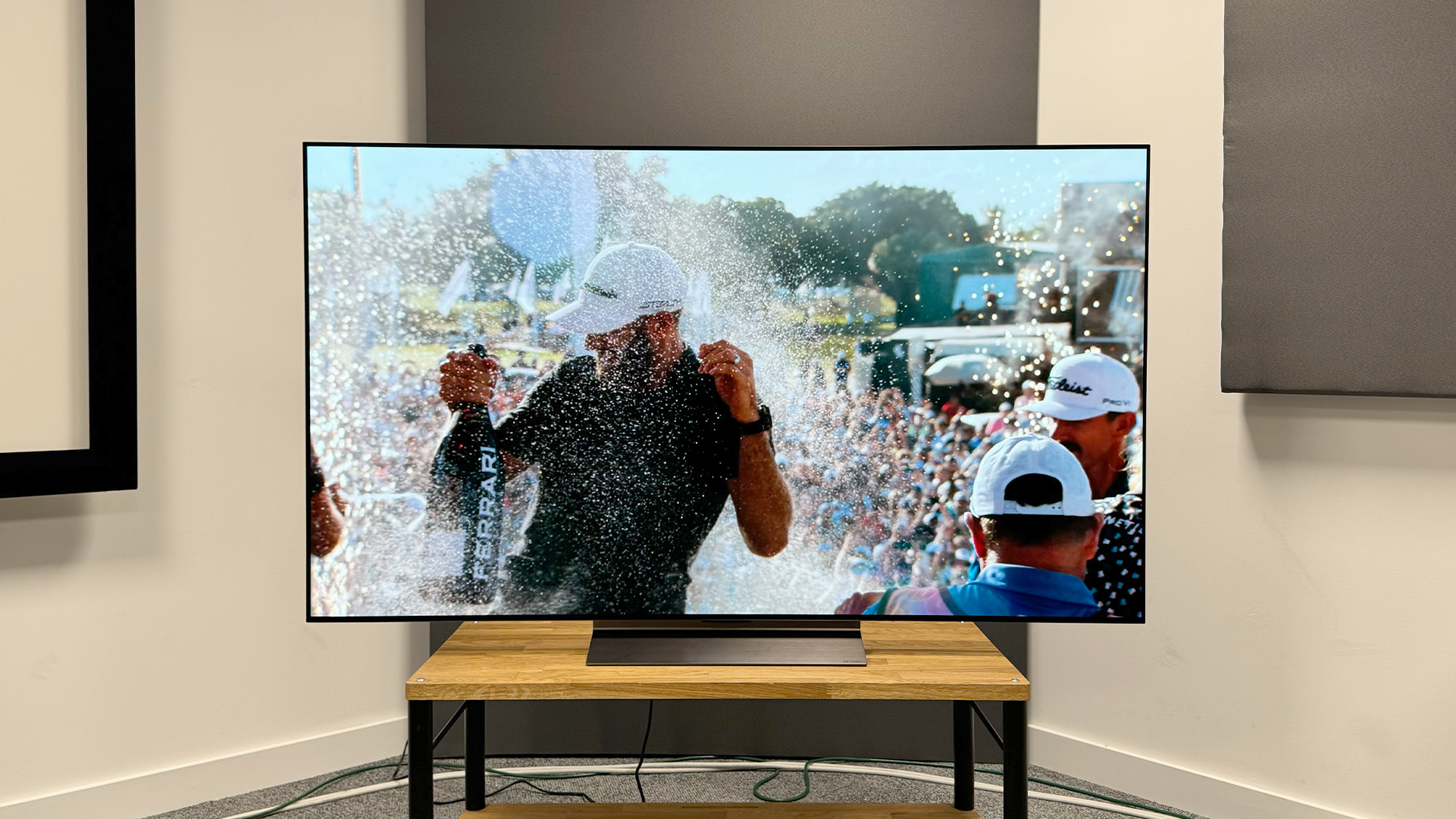
- Significantly sharper and punchier than the C3
- Rich but balanced colours, even in dark areas
- Generally very detailed, but misses the finest shadow details in SDR
While most of our TV testing is conducted in dark room conditions, performance in a well-lit environment is also important, so this is where we begin our testing of the LG C4.
Watching Season 2 of Netflix’s golf documentary Full Swing in the Dolby Vision Cinema Home mode, the C4 has noticeably more pop than the Sony A80L in its equivalent preset (Dolby Vision Bright) and punches through the room’s lighting far more effectively. The verdant green courses, yellow flags and a pink cap have terrific vibrancy without veering into exaggeration, and the white text and caddy overalls are crisp and punchy.
There’s plenty of detail in the brightest picture elements, such as the sunlit white sand of the bunkers, and the image is just as sharp and solid as it is from the A80L, which indicates a big upgrade on last year’s comparatively soft C3. Skin tones are really nice and balanced, too. At times, the A80L occasionally looks just a little ruddy – in Rory McIlroy’s face, for example – but via the C4 he looks more naturally bronzed, with really nice shading on his face and some excellent freckle definition.
Conversely, there are rare occasions when a person talking to camera looks on the A80L as if they’re somewhat in the shade, but the C4 always seems to put the talking head in the best light. The C4 looks cleaner with the occasional lower-res clips in the show, too, with less fizz around edges and no flicker at all.
Of course, neither the C4 nor the A80L has the brightness to match an MLA or QD-OLED model, and there’s some to-ing and fro-ing in the relative performances of the two models as we switch to Dolby Vision content from different streaming services, presumably because of the way the different TVs are interpreting the Dolby Vision dynamic metadata. But, overall, in these conditions, the C4 is the better performer.
The bright room Dolby Vision performance of the C4 is a good indication that LG has taken on board our comments about the C3 being softer and less punchy than the A80L and that it has improved performance in these areas, and that is confirmed when we turn the lights out and try further content.
Switching to our 4K Blu-ray of Interstellar in HDR10, we’re immediately struck by how much sharper, more solid and more impactful the C4’s picture is over last year’s C3 – and this is in our preferred Filmmaker Mode, which is also the preset with the least active processing.
Crucially, these enhancements have arrived without any sense of exaggeration having been added. Edges don’t look artificially sharpened or etched, and bright highlights don’t look unnaturally boosted. Those highlights contain plenty of detail, too, as illustrated in the bright white clouds and ice of Dr Mann’s frigid planet. In all of the ways mentioned, the C4 is at least a match for the Sony A80L, occasionally marginally surpassing it in terms of punch, but it is also warmer and richer in tone in a way that is even more pleasing to the eye and likely closer to the cinematic intent.
A swap to Blade Runner 2049, again in 4K and HDR10, confirms the C4’s richer tone – which makes the A80L look a bit cool at times – and also highlights its more vibrant colours. These colours are still balanced and natural, and there’s superb subtlety and blending to shades, but more impressive still is the consistency with which colours are delivered from the brightest to darkest parts of the picture. Last year’s LG OLEDs could lose colour volume in low-light areas, which was particularly noticeable in skin tones, but Sapper Morton’s face retains the correct hue as he talks to K from the shadows.
Blade Runner 2049 is one of our favourite discs for testing motion handling, and the C4 performs admirably in this regard, too. Some will be happy with all of the TruMotion processing switched off, as is the default in the Filmmaker Mode, but we feel it is preferable to switch to the ‘Cinematic Movement’ setting, which heavily reduces the judder inherent in 24fps movies without adding shimmer to fast motion or artificiality in the form of the so-called ‘soap opera effect’.
Dropping down to 1080p and SDR with test-favourite True Grit, we spot that (unlike when watching HDR content) the set’s Energy Saving is automatically switched on, even in Filmmaker Mode, resulting in a dull picture. It is imperative that you delve into the TV’s menus and switch it off (you’ll find it in the ‘General’ menu, not in ‘Picture’) if you want to see the TV at its best.
Do this and the C4 springs into life, delivering a bright and vibrant yet balanced picture that is crisp but clean and that expertly treads the line between noise reduction and preservation of intentional film grain. One thing to note is that while detail is generally superb, the C4 digs up slightly less from shadows than does the Sony A80L, which itself isn’t class-leading in this regard. This isn’t a big deal – we’re certainly not talking about the sort of black crush that can ruin a dark scene – but it is worth a mention.
Really, though, that minor flaw is the only one we can level against the C4’s picture quality. It might not have the pop of an MLA set or a QD-OLED such as the G4 or Samsung S95D, but for a mid-range OLED it is superb, matching the market-leading Sony A80L in almost all areas and surpassing it with its warmer tone, richer colours and even smoother control of lower-resolution signals.
Sound quality
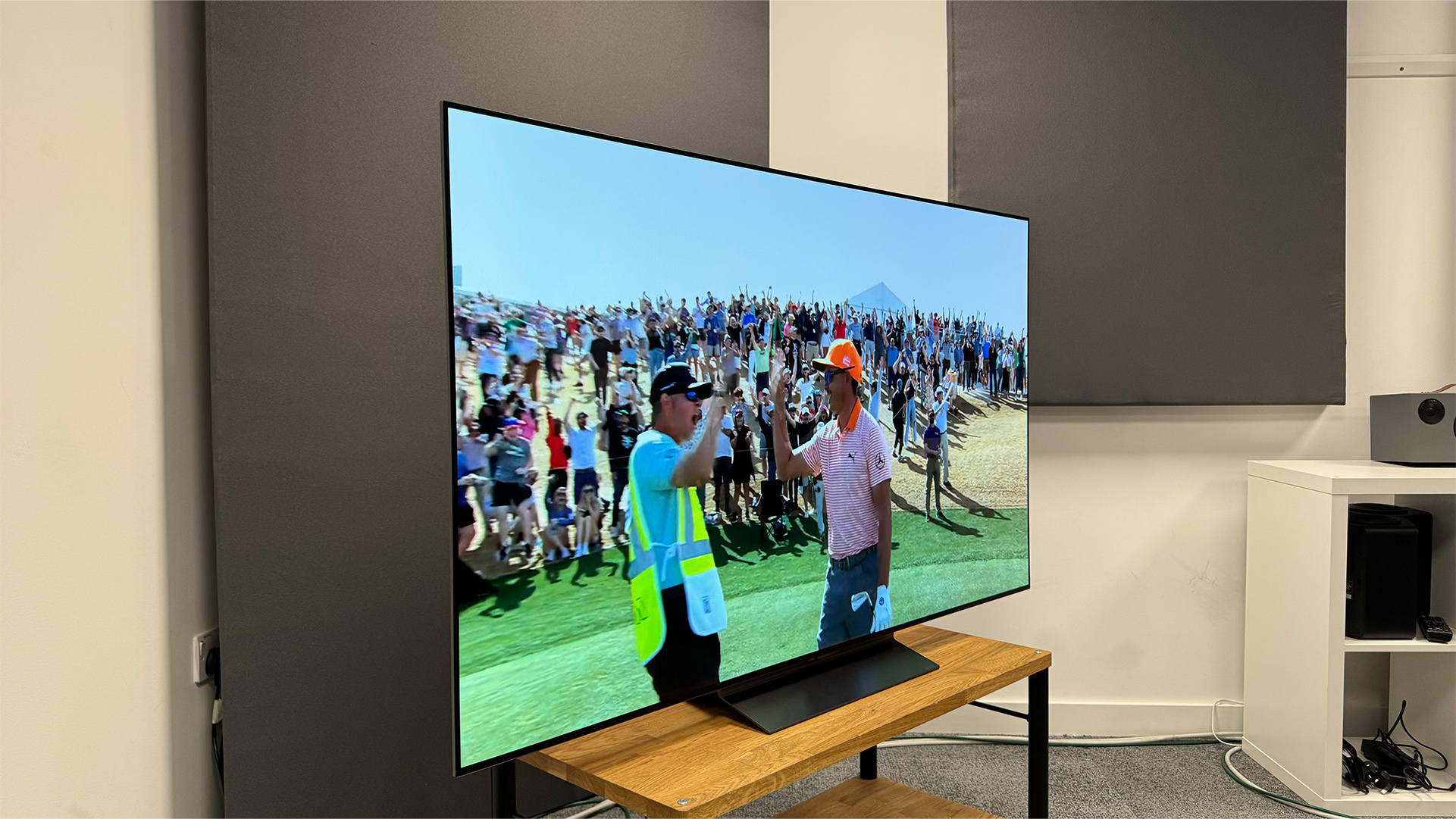
- Much better sound than from the C3
- Weighty, fairly punchy and reasonably dynamic
- Still easily beaten by a good budget soundbar
One area in which we’ve heavily criticised LG’s OLEDs in recent years is sound quality, with last year’s C3 and G3 arguably being some of the worst-sounding models that LG has produced. Thankfully, and despite the audio hardware being apparently identical to that of last year’s model, the C4 sounds much, much better.
The big issue with the the C3 was how dull it sounded, but use the AI Sound mode and the C4 is pretty punchy and dynamic, with good volume levels. There is a little bit of crackle from the cabinet when playing the super-bassy beginning of Blade Runner 2049’s second chapter, but less so than from most rival sets, and C4 does a vastly better job than last year’s model of delivering the scene’s steady increases in volume and instrumentation.
Crucially, the aggressive sharpness of last year’s AI Sound mode has been largely dealt with, so while a hint of fuzz can be heard around certain sounds at very high volumes (the interrogator’s voice during Blade Runner 2049’s first baseline test, for example), this is fairly rare, barely distracting and more or less entirely solved by keeping the TV’s volume below the already rather loud 75 mark.
There are TVs that sound better, but most cost a fair bit more and have comparatively large, obvious speaker systems. At this level, the Sony A80L is the best-sounding TV, and it does trump the C4 for clarity, control, directness and spaciousness. But the C4 is weightier and tonally richer, which is noticeable through all scenes but brought to the fore by larger movie soundtrack moments.
While the C4 isn’t necessarily better overall than the A80L in terms of sound, the fact that it’s even close means that LG has really improved in this area. Of course, we really hope that you never listen to either TV, because both would be trounced for sound quality by even a good budget soundbar – though we suggest that the Sonos Arc is the least that this sort of picture performance deserves.
Gaming
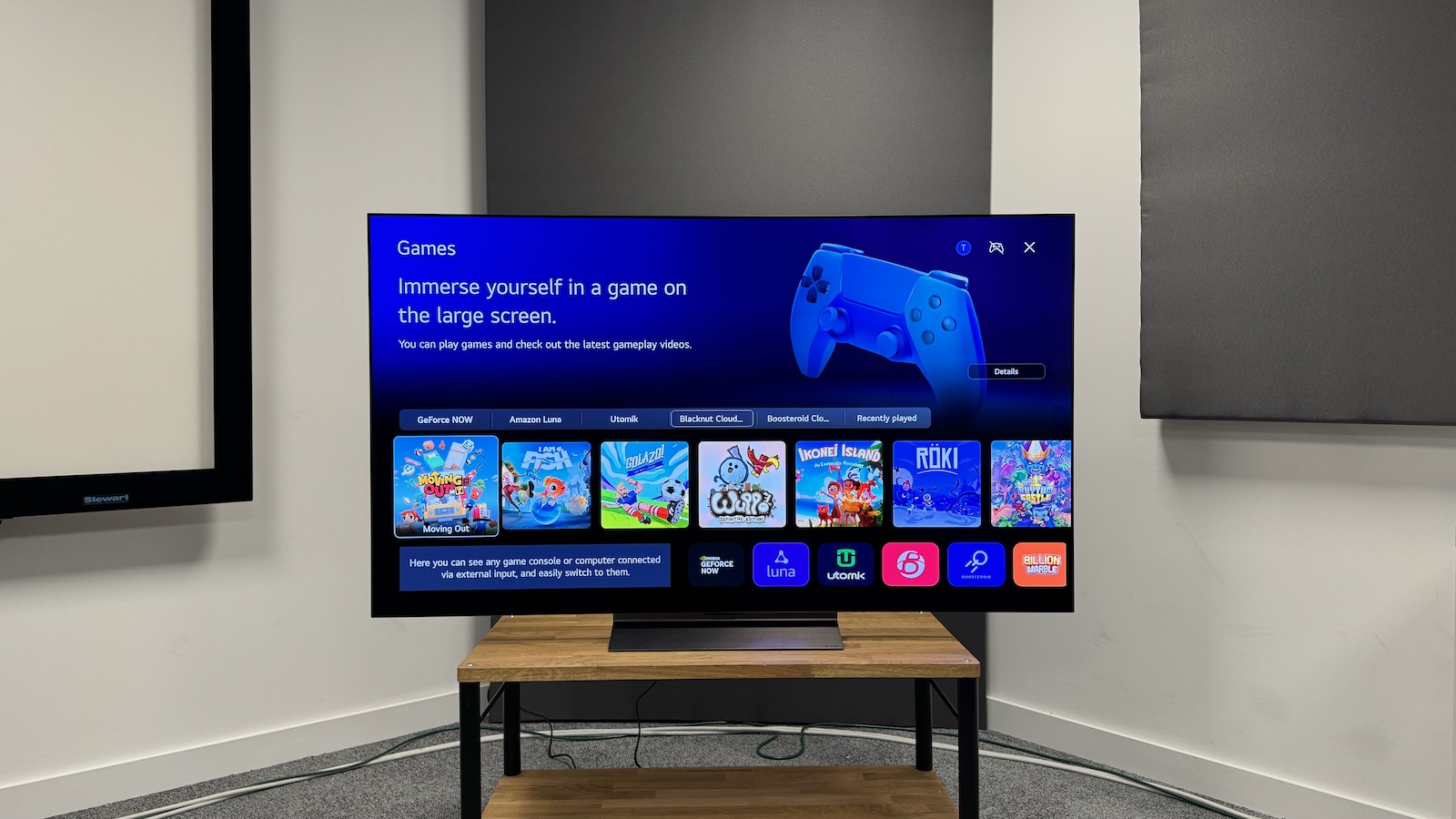
- Four HDMI 2.1 sockets with support for all important gaming features
- Excellent HGiG implementation
- Fantastic gaming picture quality
LG’s OLEDs have long been the go-to TVs for those looking for a premium gaming experience, and despite only minor spec upgrades in this area, that isn’t going to change with the C4.
Those minor upgrades are support for 4K/144Hz signals and full Nvidia G-Sync VRR certification, but you will need a very high-spec PC to take advantage of the former and the latter equates more to boosting confidence in ongoing game compatibility than to a tangible difference in performance.
The C-series didn’t need a gaming spec boost, though, because the C3 was already so well-appointed in that regard. So, the C4 boasts four HDMI 2.1 sockets, all of which support 4K/120Hz (and 144Hz), VRR and ALLM, and it supports Dolby Vision gaming. Another, often overlooked strength of LG’s OLEDs is their superb implementation of HGiG, which makes it very easy to get an accurate HDR game performance with excellent contrast and detailed highlights and shadows – this is true again of the C4.
While in spec sheet terms the gaming outlook has barely changed, the C4’s all-round picture improvements make a big difference to the actual gaming experience. Everything we play – but particularly dense, blockbuster titles such as Halo Infinite on the Xbox Series X and The Last of Us Part 2 on PS5 – looks more solid and more three-dimensional, with greater pop to highlights and lovely vibrancy to colours.
As before, there is a Game Optimiser pop-up menu that gives you quick access to various game-specific signal info and settings. As with the C3, this feels a little overburdened with options that we suspect many people will never use, but it is still nice to not have to dig into the TV’s main menus simply to check the frame rate of what you are playing.
Remote control, user interface and smart platform
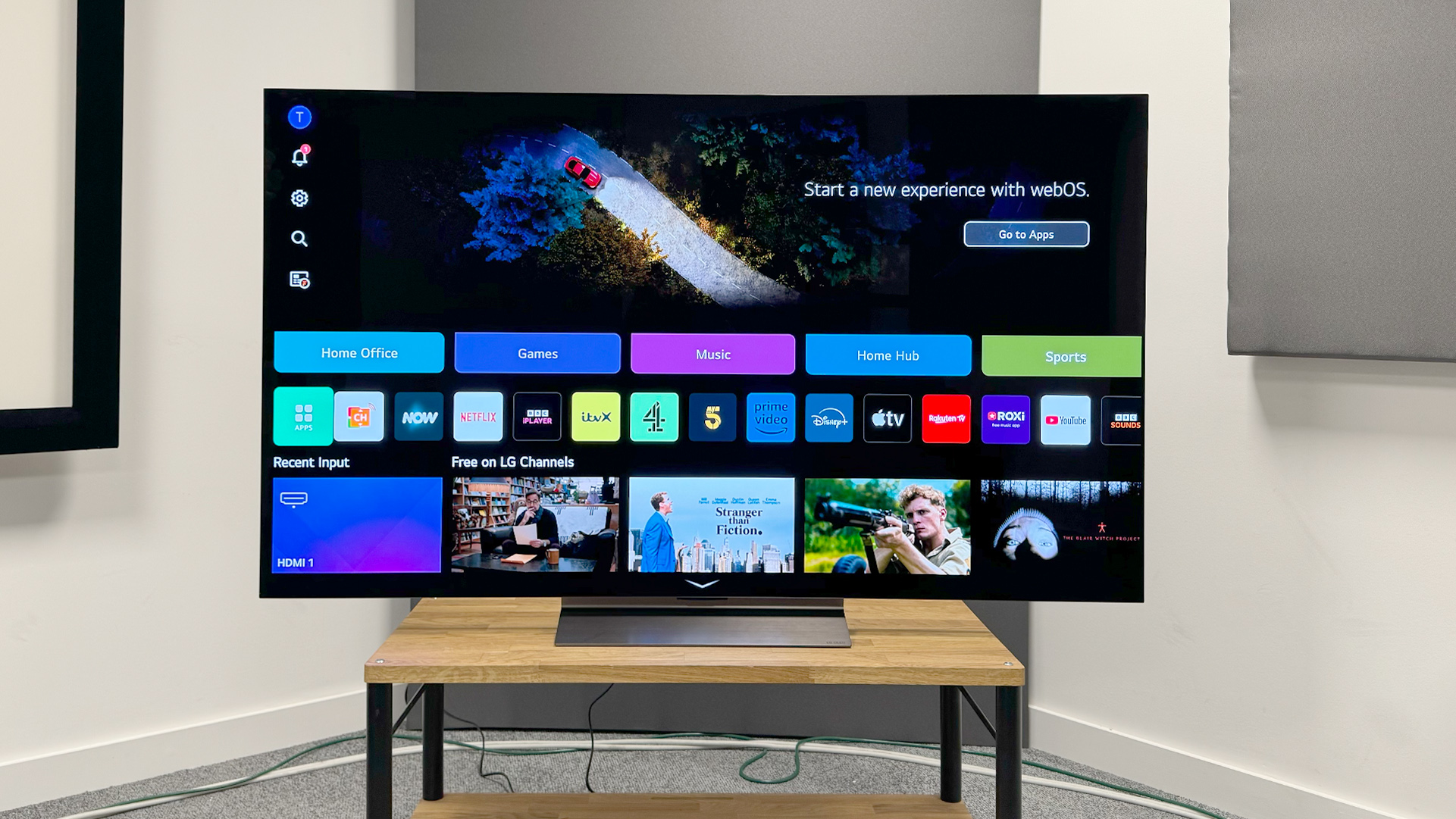
- Same ‘Magic Remote’ with pointer functionality
- Small improvements to webOS make it even nicer than before
- Excellent app selection and optimisation
Like the design of the TV, the design of the remote control is unchanged. That’s no bad thing, as the so-called ‘Magic Remote’ feels excellent in the hand and features just the right number of buttons in just the right arrangement. The ‘magic’ element is, as ever, the pointer functionality, which some people love and some people find regularly annoying, though not to an extent that seriously dampens the overall user experience.
Speaking of which, webOS 24 is very similar to the strong webOS 23 of last year, but with a couple of small but worthwhile improvements, the most worthwhile of which is the return of personalised recommendations to the home page. This has been made possible by a switch to smaller ‘Quick Cards’ (essentially folders that gather together related apps and features) and a very slightly smaller ad banner, which is still too big and arguably shouldn’t be a feature of a premium TV at all.
The webOS 24 layout is intuitive and operation is flawless and super-fast throughout testing, and even the detailed menus for picture, sound and everything else are friendlier and less intimidating than those of other brands.
As with webOS 23, webOS 24 is absolutely packed with apps, including all the big hitters (Netflix, Disney+, Prime Video, Apple TV etc), localised services (such as BBC iPlayer, ITV Hub, Channel 4 and My5 in the UK), and even game streaming apps (including Nvidia GeForce Now). It isn’t only that all of these apps are on board, either, but that each appears to have been properly optimised for the TV platform so that it performs flawlessly and delivers its content in the formats that it should. These things are not always true of other TVs, particularly those on Google’s TV platform.
Value
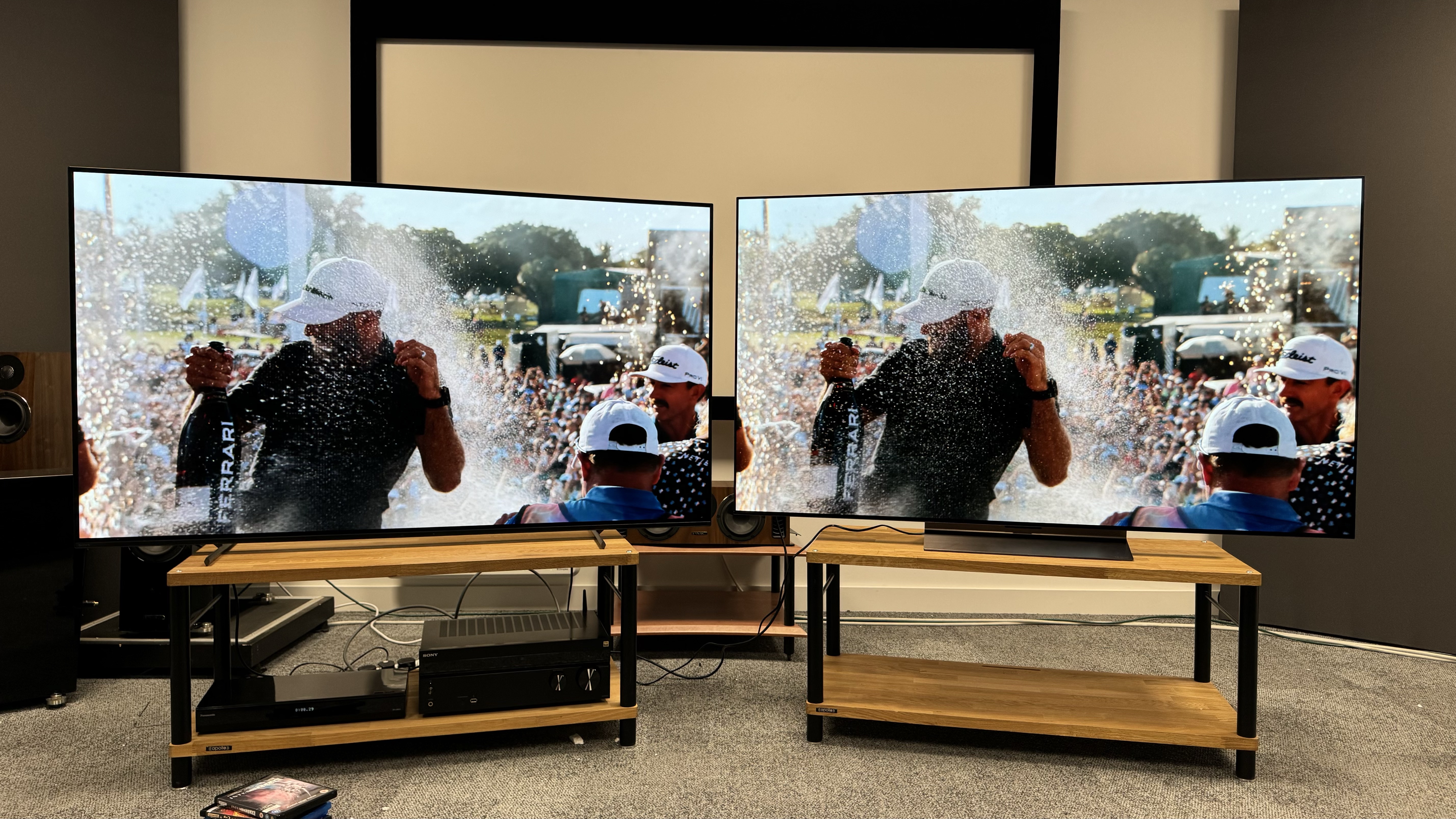
- Good value for a new, premium TV
- Very expensive compared to the now-discounted sets of last year
The C4 has now been available for a few months and some good discounts on the launch price have started to appear, but it is still very expensive compared with the now hugely discounted TVs that came out last year.
The upgrade over the C3 is significant, but at the time of writing you can buy a 65-inch C3 for around £1500 / $1600 / AU$3000. The Sony A80L runs the new C4 much closer on performance and, while it's not been discounted as much as the C3, it too is available for less than the C4, at around £1999 / $2000 / AU$3795 in August 2024. If you must buy a TV now, you will get better value by buying one of those, but the most sensible choice will be to wait for the prices of the C4 to drop in the coming months.
Here are the latest prices for the 65-inch versions of the C4, C3 and Sony A80L:
Breakdown scores
Our testing process involves evaluating the LG C4 in a number of key areas and comparing it to key rivals around the same price point. This allows us to build up a picture of where they sit in their specific category. Our ratings are listed here:
| Header Cell - Column 0 | Tester's notes | Rating |
|---|---|---|
Design | Super-thin and amazingly light, but well-made. The stand is smart and compact, but it doesn't leave space for a soundbar. | 4/5 |
Features | No MLA technology or heatsink, but that's to be expected at this price, and the C4 is otherwise supremely well-specced. | 5/5 |
Picture quality | A big step-up on the C3 in terms of brightness and sharpness, helping to make this the new best in class. | 5/5 |
Sound quality | Another big improvement, particularly in terms of scale and dynamics. For a TV with a hidden sound system, it sounds good. | 4/5 |
Gaming | A flawless gaming spec that includes four HDMI 2.1 sockets, plus super-responsive, crisp, bright and vibrant action. | 5/5 |
User experience & smart platform | The refined webOS platform is intuitive, responsive and packed with properly optimised apps. | 5/5 |
Value | Decent value for a brand-new mid-range OLED, but it of course looks expensive against last year's now hugely discounted sets. | 4/5 |
Also consider
In terms of 2024 TVs from rival brands, it's the Samsung S90D and Sony Bravia 8 that you will most likely want to put on your shortlist along with the LG C4. Unfortunately, these models haven't yet been offered to us for review so we can't offer a considered comparison. We will update this page once that changes, but here are some other models that we have tested and should also be considered.
LG C3
The C4 is a surprisingly large upgrade on its predecessor, the C3, particularly in terms of brightness, contrast and sound quality. However, while the C4 is still at its high launch price and the C3 is heavily discounted, it’s the older model that is the more sensible purchase.
Sony A80L
The A80L is last year’s best performance-per-pound TV and the OLED to beat, and the C4 just about does that, most notably in terms of richness and vibrancy, not to mention usability and gaming features. Again, though, as an outgoing model, the A80L is much cheaper than the brand-new C4.
LG G4
The model above the C4 in LG's 2024 OLED TV range, the G4 adds MLA technology and a heatsink for significantly higher brightness and has more advanced picture processing. The picture frame-style design is great if you're wall-mounting, too, but the G4 can also be bought with a pedestal stand if preferred. This is a great option if you've got a very large budget, but the C4 offers a better balance of performance and price.
Philips OLED809
It isn't available in the US or Australia, but UK buyers should also consider the OLED809, which majors on sharpness and colour vibrancy and boasts spectacular Ambilight, which entails the onscreen action being extended onto the wall around the TV in the form of coloured light. Ultimately, we feel the C4 is the better balanced performer overall, but the OLED809 is a great alternative.
FAQ
How much better is the LG C4 than the C3?
While the design and specs are very similar, the C4 is actually markedly better than the C3 it replaced. It's brighter and sharper, making for a punchier and more exciting delivery, but balance and authenticity haven't been compromised. It sounds significantly better, too.
Is the LG G3 better than the C4?
While the C4 is the newer TV, it doesn't have MLA or a heatsink, which last year's G3 does. The C4 makes up for this to an extent with better picture processing, but the G3 is still slightly brighter. On the other hand, the C4 has better sound and comes with a pedestal stand, whereas the G3 comes with a wall-mount. Ultimately, these two TVs are very closely matched, so we recommend you choose the one that best suits your room requirements and budget.
Recent updates
6th August 2024
Updated the pricing section with comparisons with the Sony Bravia 8 and Samsung S90D, added the LG G4 and Philips OLED809 as 'also consider' options, added an FAQ section, plus a general update for relevance and clarity.
5th April 2024
Date of original review.
MORE:
These are the best TVs you can buy right now
Also check out our LG G4 hands-on
This is LG's 2024 OLED range in its entirety
Tom Parsons has been writing about TV, AV and hi-fi products (not to mention plenty of other 'gadgets' and even cars) for over 15 years. He began his career as What Hi-Fi?'s Staff Writer and is now the TV and AV Editor. In between, he worked as Reviews Editor and then Deputy Editor at Stuff, and over the years has had his work featured in publications such as T3, The Telegraph and Louder. He's also appeared on BBC News, BBC World Service, BBC Radio 4 and Sky Swipe. In his spare time Tom is a runner and gamer.
- Lewis EmpsonSenior Staff Writer
